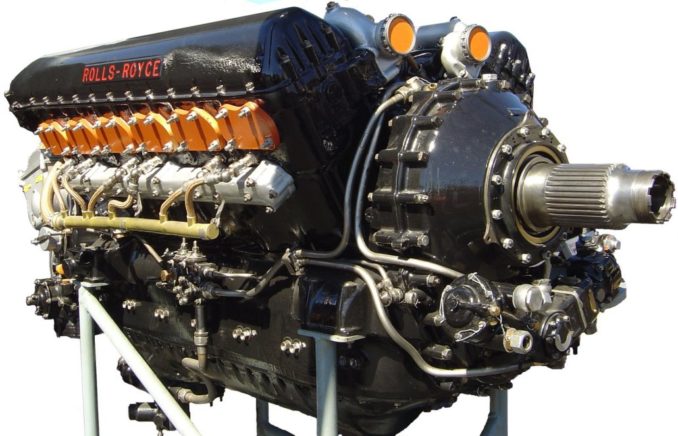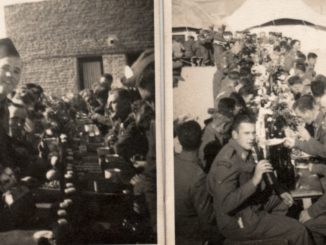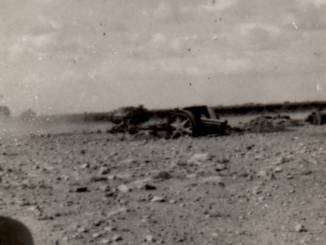
JAW at English Wikipedia [CC BY-SA]
The Rolls Royce Merlin was a V12, 27 litre engine and originally was a private venture so was financed entirely by Rolls Royce and its backers. Designated the PV12 it followed the Rolls Royce trend of a mono-bloc casting for each bank of 6 cylinders and was designated PV12. The final drawing and design were fixed on the 22nd April 1933, this coincidentally being the same day Sir Frederick Royce died.
The PV12 had a good heritage being based on the widely successful 1930 Kestrel engine which powered the Hawker Demon, Fury, Hart and Hind biplanes which ran to a total production of 4,674 units. The Kestrel was equipped with a supercharger, automatic boost control and could run on 87 octane fuel – standard car petrol. The Merlin also had its roots firmly planted in the Rolls Royce ‘R’ engine. This engine famously powered the SuperMarine SB6 aircraft to successfully capture the Schneider Trophy and set new air speed records.
There were teething problems however, the PV12 was almost destroyed during its first run in1933 with the mono-blocs cracking. In 1934, after some modifications, it completed a full test producing 790hp at 2,500 rpm and was subsequently test flown in a Hawker Hart the following April.
1935 saw the Air Ministry finally give their support and the PV12 was officially called the Merlin. – the Air Ministry decided that all RR aero engines would be named after birds of prey.
After a short time, the production Merlins were designated Merlin Bs . These incorporated mostly production based modifications to the original Merlin but cylinder blocks continued to crack and this was a cause for concern not only at Rolls Royce but also the Air Ministry.
The next incarnation, the Merlin C, produced 890 HP and overcame the cracking cylinder block problem by having a different casting for each cylinder rather than each bank of 6 cylinders. This was the variant used to power the prototypes of both the Spitfire and Hurricane. Subsequent modification meant that the engine produced 955hp in May 1935 but this unfortunately failed after a 50 hour run test was completed.
Next came the Merlin F which was approved for production and became known as the Merlin I – this type powered the Hurricane and Battle aircraft and led to around 180 units being produced.
Following a major redesign of the cylinder heads, the Merlin G appeared with an increased power output of 1,030 HP at 3,000 rpm and became known as the Merlin II in 1937. The changes made necessitated a redesign of the nose of the Hurricane and the Battle as well as changes to the flying controls. Given the increase in power output, it was deemed an acceptable change.
Later that year (1937), Earnest Hives, an RR engineer developed a ‘racer’ version of the Merlin II that developed 2,160 HP for short periods of time as well as 1,800 HP for at least 15 hours continuously. This engine used higher octane fuel than usual but was seen as an indication of the engine’s potential.
The Merlin II powered all RAF spitfires and Hurricanes at the outbreak of WWII.
In 1938, a variant of the Merlin II had been developed for bomber aircraft. The Merlin X (fitted to the Armstrong Whitworth Whitley and Handley Page Halifax). This had a 2 stage supercharger which consists of one supercharger feeding another as opposed to a large, single supercharger. The benefits of which are greater efficiency and a smaller footprint as space is always at a premium with respect to aerodynamics.
At the outbreak of the Battle of Britain, both the Hurricane and Spitfire were fitted with the new Merlin III. This had an improved supercharger and could run on the now available 100 octane fuel.
The Merlin III however had a major disadvantage compared to the BF109’s Daimler Benz fuel injected DB601 engine. The Merlin used carburettors and therefore had float chambers. These are similar to the cistern of a toilet. They hold a small amount of liquid (fuel in the case of an engine and water in the case of a toilet’s cistern) where the amount allowed in is regulated by a device that floats in the liquid. This is fine for level flight but if flying inverted or under negative G, it either shuts off the fuel or allows too much in resulting in the engine losing power.
Come to the rescue Beatrice ‘Tilly’ Shilling of the Royal Aircraft Establishment who suggested that the problem could be largely overcome with the aid of a washer. The washer would be placed on the float chamber at the fuel feed. The carefully machined hole would allow fuel in but restrict outflow and so allow fuel to remain in the float chamber under negative G. What became known as “Miss Shilling’s Orifice” was fitted to all Merlins and gave our pilots a fighting chance under negative G conditions.
The next development was the Merlin XX destined for the Hurricane, Mosquito and Lancaster (the latter being a development of the ill-fated Manchester with its wholly unreliable RR Vulture X24 engine) and the Merlin 45 for the Spitfire. Both had a 2 speed supercharger which allowed an increase in full throttle from 16,000 ft to over 19,000 ft.
This development was again enhanced on the Merlin 60 which allowed full throttle up to 30,000 ft giving the Spitfire an increase in altitude of 10,000 ft and an increase in speed of 70 mph.
This 2 speed supercharger was then mated to a 2 stage supercharger for the Merlin 61 in 1942 boasting 1,280 HP and used in the Spitfire IX. This unit was also chosen to replace the asthmatic Allison V-1710 unit powering the P51 Mustang. These Merlins were built by Packard after some modifications to fit their manufacturing process and became known as the V-1650.
By now, Rolls Royce had moved on and had finalised the 37 litre Griffon whose development had been paused to allow work on the Manchester’s X24 Vulture engine. By now the Merlin, with the addition of monomethyl aniline to the fuel, could provide 2,780 HP and was the standard fit for Mosquitoes and Lancasters.
After the war, the Merlin could be found in many civil aircraft including the Lancastrian, York and the Canadian DC4M Argonaut however time and technology had caught up with the Merlin with production ceasing in 1951.
A total of 168,040 Merlins of all types had been created however Rolls Royce had the last laugh over its old foe: Spain license built the BF109 after the war however the Hispano-Suiza engine originally intended was not up to the rigours of front line service so eventually, the Merlin was settled on with 500 or so being purchased from British war surplus stocks. These ‘Merlin Messerschmitts’ were retired in 1965, 9 years after entering service and can be differentiated from the original Daimler engines by noting the position of the exhaust stacks. Merlins have the exhaust stacks at the top with the Daimler having an inverted engine so the stacks are at the bottom – take a look at the BF109s in the film Battle of Britain.
© Rat Catcher 2017



